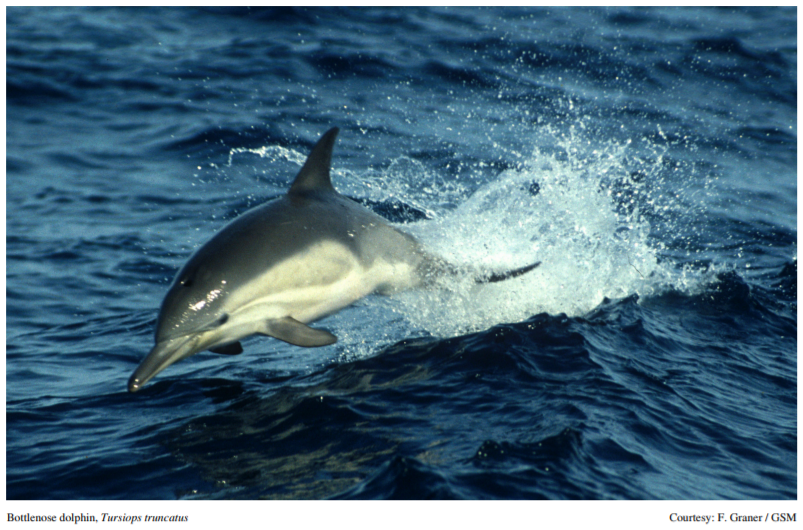Marine Biological Diversity Beyond Areas of National Jurisdiction
A. Broggiato*
University of Milan, Milan, Italy
*Corresponding author (currently at MARE, European Commission, Brussels, Belgium)
EPL, Vol.38, Iss.4, pp.182-188, 2008
A. Broggiato*
University of Milan, Milan, Italy
*Corresponding author (currently at MARE, European Commission, Brussels, Belgium)
EPL, Vol.38, Iss.4, pp.182-188, 2008
Introduction
The 2nd meeting of the ad hoc open-ended informal working group to study issues related to the conservation and sustainable use of marine biological diversity beyond areas of national jurisdiction (WG) met at the United Nations headquarters in New York, from 28 April to 2 May 2008.
Legal Framework
According to customary international law, every State, within its jurisdiction, has the sovereign right to exploit its own resources and the responsibility to take adequate steps to control and regulate sources of serious global environmental pollution or transboundary harm within the territory subject to its jurisdiction. On the other hand, the doctrine is not uniform in recognizing that a State has the same responsibility in relation to areas beyond national jurisdiction, such as the high seas. Therefore, the issue at stake – conservation of marine biodiversity beyond national jurisdiction – is quite controversial since it deals with the high seas, regulated by the customary legal regime of the freedom of the high seas, illustrated by the United Nations Law of the Sea Convention (hereafter LOSC). The area of the high seas comprises “all parts of the sea that are not included in the exclusive economic zone, in the territorial sea or in the internal waters of a State, or in the archipelagic waters of an archipelagic State”, and is regulated by the freedom for all States, both coastal and landlocked, of navigation, overflight, laying submarine cables and pipelines, fishing and research. This freedom is not unlimited and shall be exercised with due regard for the interests of other States, for the rights enjoyed under the Convention with respect to the activities in the Area, and for the conservation of the living resources. Moreover, the high seas shall be reserved for peaceful purposes, and no State may claim to have sovereignty over any part of the high sea.
Another important legal regime that is relevant for marine biodiversity beyond national jurisdiction is the Convention on Biological Diversity (CBD), whose scope of application comprises, besides obviously all the territories subject to the jurisdiction of the States parties, “processes and activities, regardless of where their effects occur, carried out under its jurisdiction or control, within the area of its national jurisdiction or beyond the limits of national jurisdiction.”10 Besides, some Regional Fisheries Management Organizations (RFMOs) responsible for the management of fish stocks are also relevant and may have competences in areas beyond national jurisdiction. Notwithstanding the legal effects that the CBD and the RFMOs can have in marine areas outside national jurisdiction, it should be noted that they are binding only on States parties to those legal regimes. With the improvement of technologies and the new discoveries related to life in the deep sea-bed, and the consequent emergence of new activities11 in areas further and further from the coasts, often outside national jurisdiction, greater attention started to be focused on the impacts that these anthropogenic activities have on the marine environment of the high seas. Therefore a process of consultation started, within the framework of the United Nations, in order to find out possible solutions for the management of marine biodiversity beyond national jurisdiction. In this regard, two of the main concerns faced by the international community are the identification of the applicable law to the subject matter and the determination of any eventual legal vacuum. This is the context whereby the WG came into existence.
The Second Meeting of the Working Group
The second meeting of the WG was introduced by the two co-chairpersons: Ambassador Robert Hill of Australia and Ambassador Juan Manuel Gomez Robledo of Mexico. They recalled that the United Nations Convention on the Law of the Sea is the legal framework for all the activities carried out in the oceans, including in areas beyond national jurisdiction (ABNJ), and that the General Assembly has the official role of discussing the subject matter. They stressed the importance of international cooperation, in an integrated framework, and the need for the necessary political will to make concrete proposals to conserve marine biodiversity and to realize the goal to halt biodiversity loss by 2010. They made clear from the beginning the intention and wish to find a way to move beyond what was done in 2006 during the first meeting of the WG.
Before the beginning of the discussion among the States, attention was focused on some scientific presentations that gave examples of the richness in biodiversity of seamount ecosystems, stressing that the marine environment is much richer in biodiversity than land ecosystems, that recovery time, when possible, is estimated in centuries or millennia and that deep sea areas are still not properly studied. The scientists made useful recommendations for policy makers:
• identify vulnerable areas, raise research data and measure impacts on the areas,
• link research community to RFMOs institutions,
• improve the connection between policy demand and research,
• improve international cooperation.
The discussion was organized around the following items: the environmental impacts of anthropogenic activities on marine biological diversity beyond areas of national jurisdiction – coordination and cooperation among States as well as relevant intergovernmental organizations and bodies – the role of area-based management tools – genetic resources beyond areas of national jurisdiction – whether there is a governance or regulatory gap, and if so, how it should be addressed. During the first day of the meeting all the delegations expressed their general positions on the management of marine biodiversity beyond national jurisdiction, under the discussion on general remarks. Since the beginning, a clear-cut division was evident between the States willing to engage in concrete discussion to find practical solutions for the conservation and sustainable use and development of marine biodiversity beyond national jurisdiction, and those that are more cautious and not disposed to make a dent in the freedom of the high seas.
The Possible Role of the International Seabed Authority
An interesting intervention of the International Seabed Authority (ISA) drew attention to the fact that the ISA has competence in environmental matters concerning impacts that activities (intended as activities related to mineral resources) in the Area might have. The representative of the ISA underlined that, to this end, the Authority has adopted regulations for EIA and has collected a considerable amount of environmental data. Considering that this would be time consuming, and of course the difficulties of creating new institutions, the possibility to use the already existing competence of the ISA on environmental matters should be taken into consideration, within the framework of the future arrangement for the governance of marine biodiversity beyond national jurisdiction.

This includes only short extracts from the original article; view in full via the link below.
